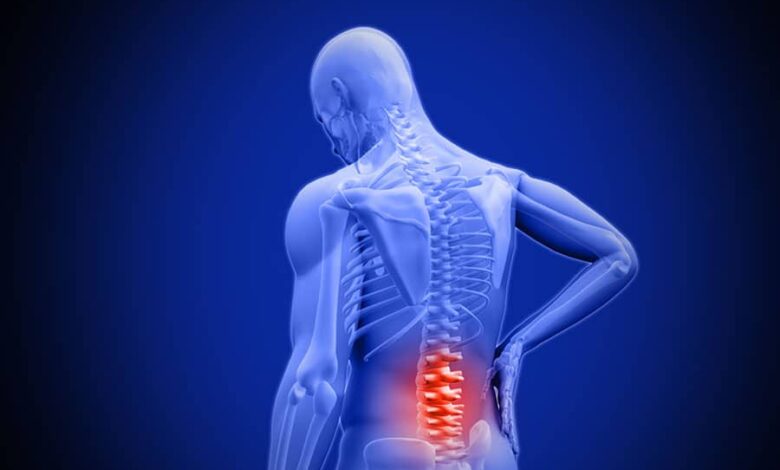A Professional Guide to Comprehensive Pain Management by Dr. Brandon Claflin

The experience of living with pain, be it dull aches, stabbing, or shocking sensations, is unpleasant. Pain can affect the quality of life negatively, as individuals who live with pain are four times more likely to struggle with depression and anxiety than those living without pain. They also often have a difficult time working.
When you’re in pain, finding the right treatment can help prevent it from becoming chronic and causing more harm. But is it possible to manage pain effectively and lead a healthy lifestyle?
Pain specialist Dr. Brandon Claflin from Oklahoma provides a professional guide to comprehensive pain management.
First Step to Pain Management: Assessment
Dr. Claflin notes that to address pain, a detailed and focused assessment helps determine the potential cause of your pain. A pain doctor can start with a thorough evaluation of a patient’s history of pain.
You can expect your doctor to ask questions like: How long have you been experiencing pain? Were you involved in an accident? Have you started a new activity or did you fall?
Next, your doctor might recommend an in-depth physical examination. What a physical examination does is reveal changes in mobility and motion, which may indicate nerve damage. During a physical exam, special attention is paid to the source of pain. Additional tests like urine and blood tests and imaging processes like MRI and X-rays can help identify pain or disease processes that may trigger pain.
To understand what’s happening inside the body, specialists use advanced technologies, such as electromyography (EMG) and nerve conduction studies (NCS). With the help of these testing technologies, specialists can better monitor the health of muscles and muscle neurons or nerves that control them to pinpoint pain.
Typically, causes of pain could be:
- Injuries, including old injuries that never healed after treatment
- Diseases like fibromyalgia, arthritis, and endometriosis
- Falls
- Chronic fatigue syndrome
Obesity, engaging in extra activities, and avoidance of physical activities after trauma recovery also increase the risk of pain.
Step Two: Understand Your Treatment Options
Starting pain treatment using a more conservative approach is often best, says Dr. Claflin. Taking this step helps doctors and patients avoid intrusive methods like surgery, which could affect movement and body sensations.
Less Intrusive Treatment Options for Pain
1. Physical therapy
Physical therapy can help patients regain functionality and reduce pain after an accident. According to Claflin, exercises used in physical therapy can be used to condition muscles, restore strength, and help improve physical movement.
For example, performing repetitive range-in-motion workouts and stretching can help improve flexibility and lessen tension in muscles, joints, and nerves. When done gently every day, these exercises help prevent irritation on already damaged tissues.
Adding heat therapy to your pain management program also helps reduce inflammation and tension in muscles and joints. However, painful areas likely shouldn’t be exposed to heat for more than 20 minutes, as it could cause more damage.
Additionally, massage may help relieve stress in affected areas and improve blood flow, hence reducing pain.
2. Oral medications
Over-the-counter medications, like anti-inflammatory drugs, are often some of the first treatment options for pain. Non-narcotics or muscle relaxers relieve nerve pain, including common arm and herniated disc conditions. Opioids like morphine are powerful painkillers that are effective for chronic pain, but long-term use can be very dangerous. Dr. Claflin advises extreme caution with any such medication
3. Improve posture
Poor posture strains muscles in the lower back, increasing muscle tension that can result in chronic pain in the back, neck, and shoulders. Consider maintaining good ergonomics. This generally entails sitting and standing straight without slouching and avoiding carrying heavy items in one hand. Instead of bending with your shoulders rounded, bend with your knees.
Interventional Pain Treatment Options
If pain medications and physical therapy don’t provide long-term pain relief, it’s wise to seek interventional methods. Dr. Claflin recommends a multidisciplinary approach that encompasses advanced medical interventions, psychological support, and lifestyle adjustments. This way, patients can manage pain effectively without resorting to surgical treatments.
Dr. Claflin shares examples of interventional pain treatments he and his team of pain specialists provide at Oklahoma Interventional Spine & Pain Clinic. This may include:
1. Radiofrequency Ablation (RFA)
Pain specialists might use radiofrequency ablations to help reduce pain in various parts, like the neck and back. The procedure involves sending radio waves through a needle to heat a part of the nerve to prevent it from sending pain signals to the brain. Radiofrequency ablation is a long-term pain relief treatment that’s typically safer than opioids and surgery.
2. Medial Branch Block Injection
This interventional treatment can lessen pain caused by facet joints. A medial branch block injection contains anesthetic medication that targets nerves that transmit pain sensations to the brain. Patients enjoy pain relief for several years after the injection.
3. Epidural Steroid Injection
This is a minimally invasive treatment that aims to alleviate low back, leg, arm, and neck by injecting anti-inflammatory medication. This medicine targets fatty tissues surrounding spinal nerves to reduce inflammation, a major contributor to pain.
4. Botox Injection for Migraines
The purpose of using Botox is to prevent neurotransmitters from sending pain information to the brain and nerves. When neurotransmitters are blocked, muscles can relax more, reducing pain sensitivity.
Conclusion
Managing pain, whether acute or chronic, can be possible: What you need to do is find a qualified pain specialist to guide you through pain management. A pain specialist like Dr. Brandon Claflin can help you understand the treatment options available for your specific pain.
A complete health assessment to help determine the source of pain and affected areas. Your physician can then collaborate with you to customize a treatment plan that provides lasting results.














